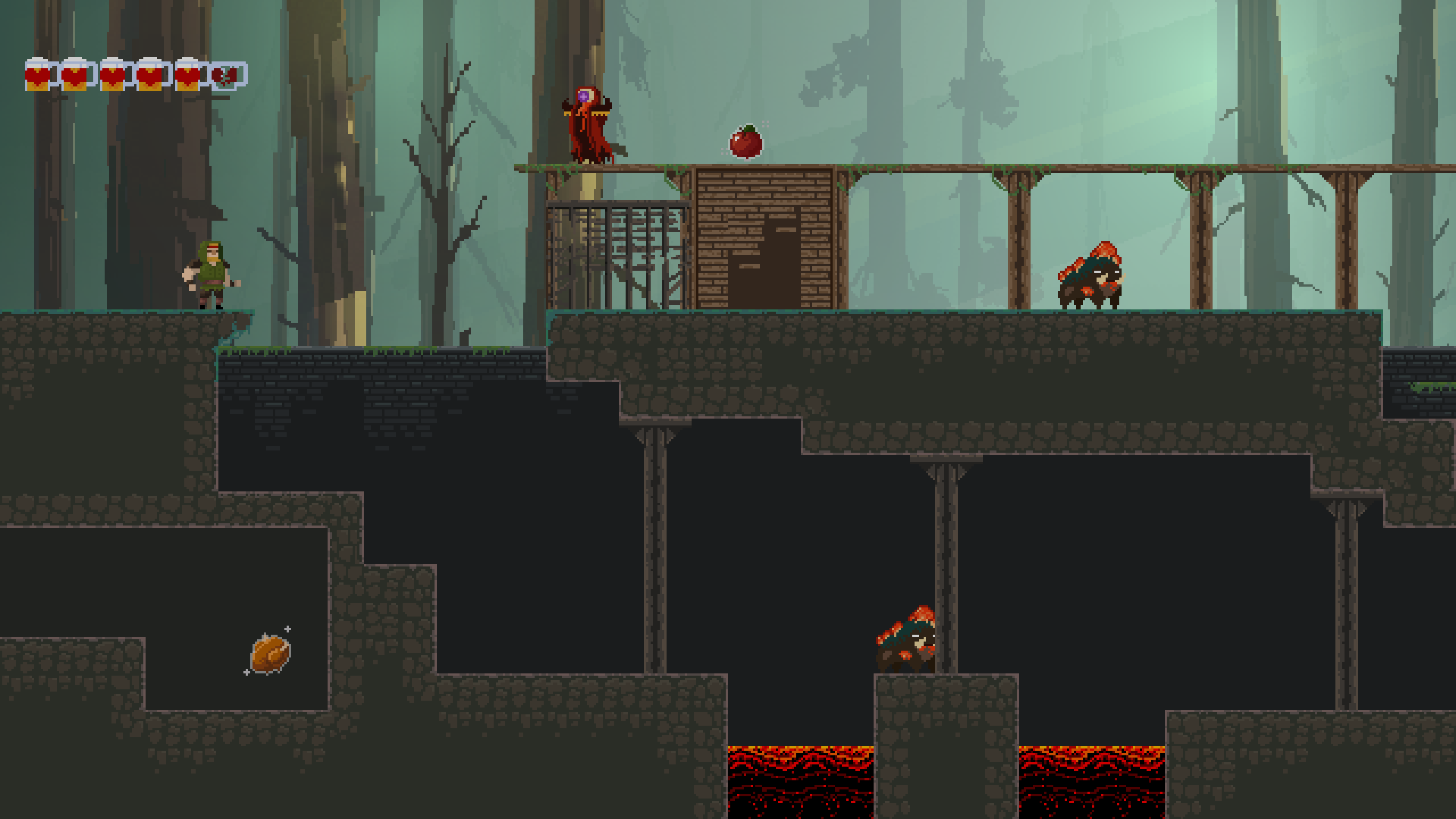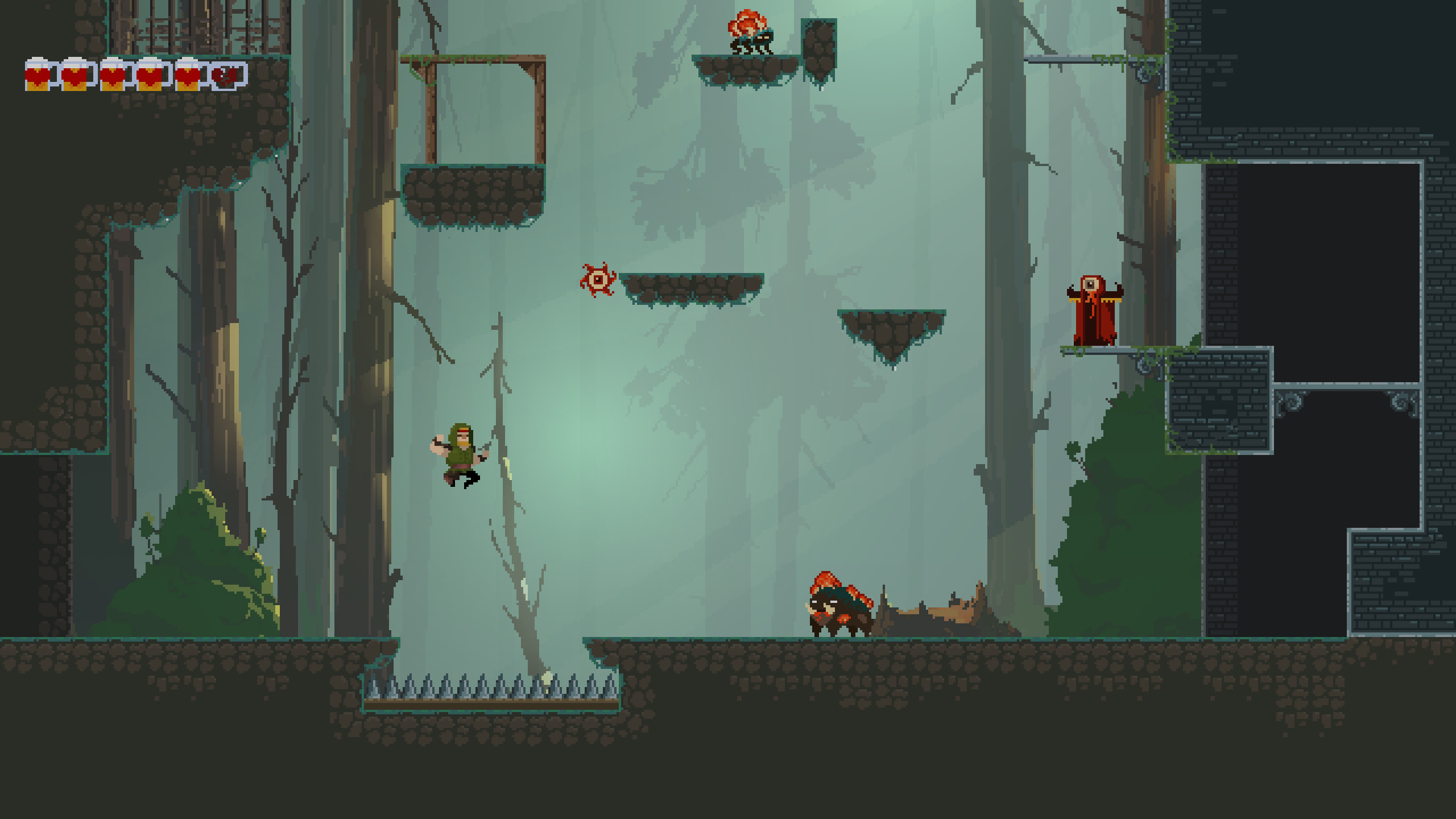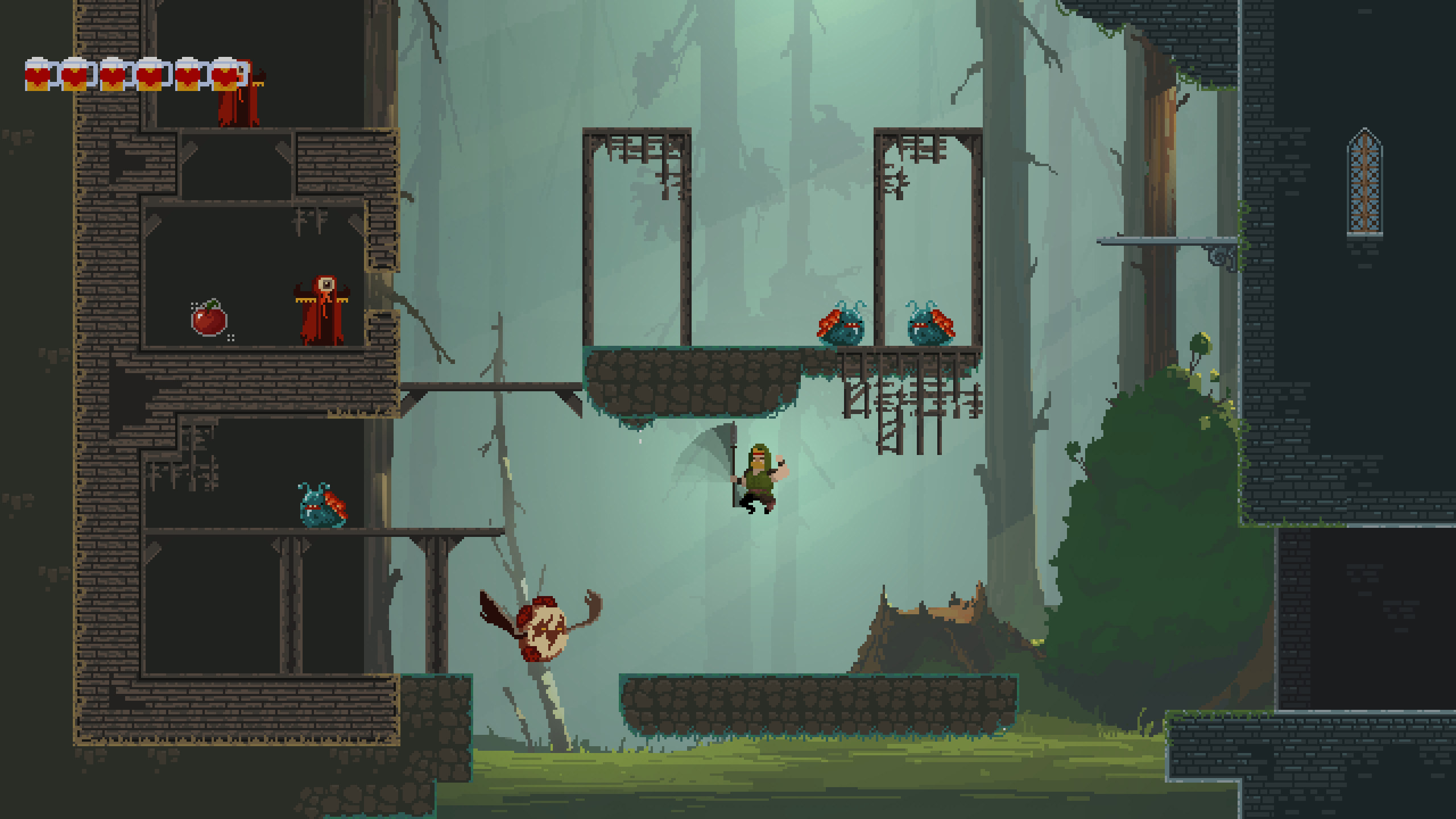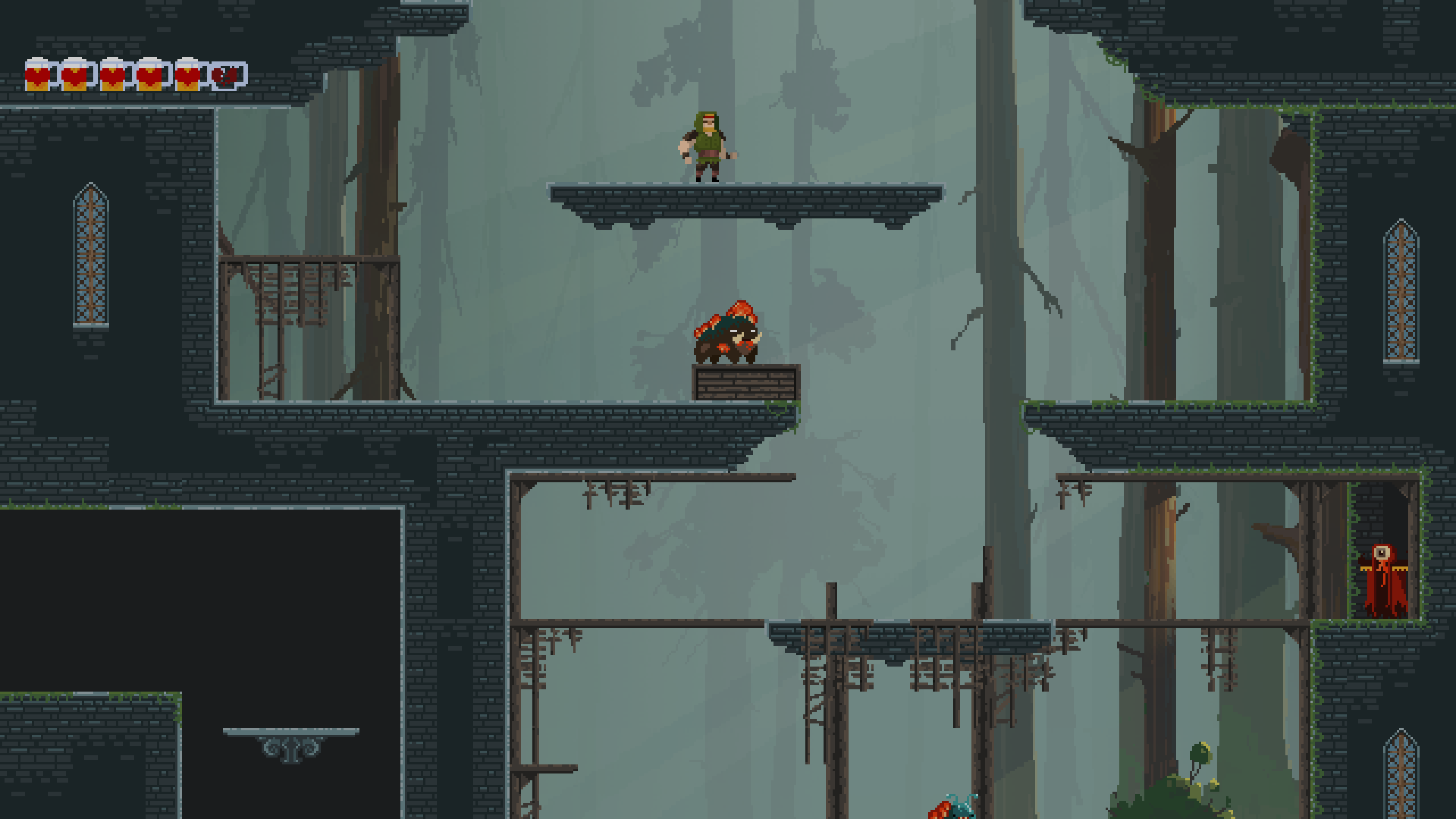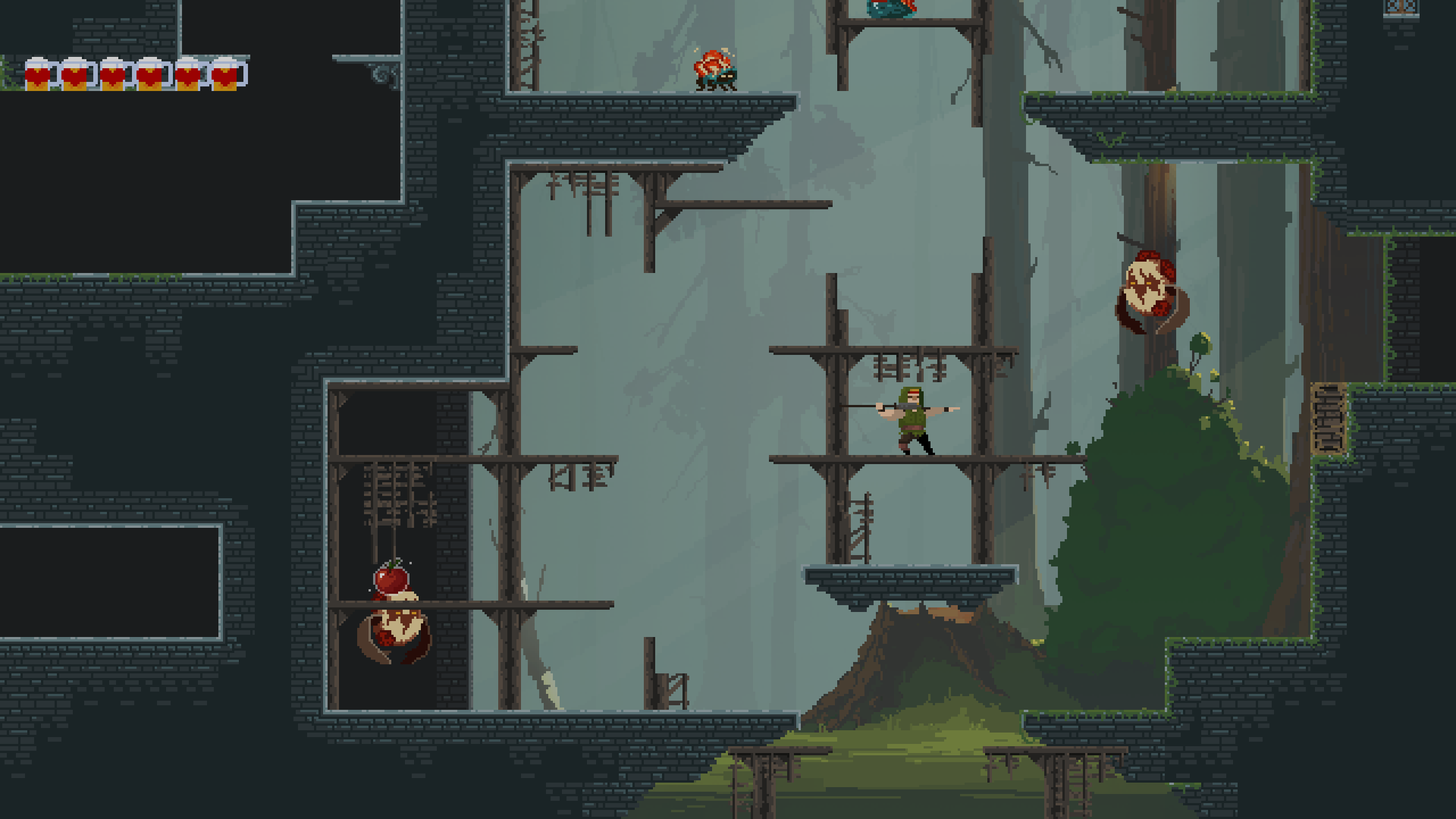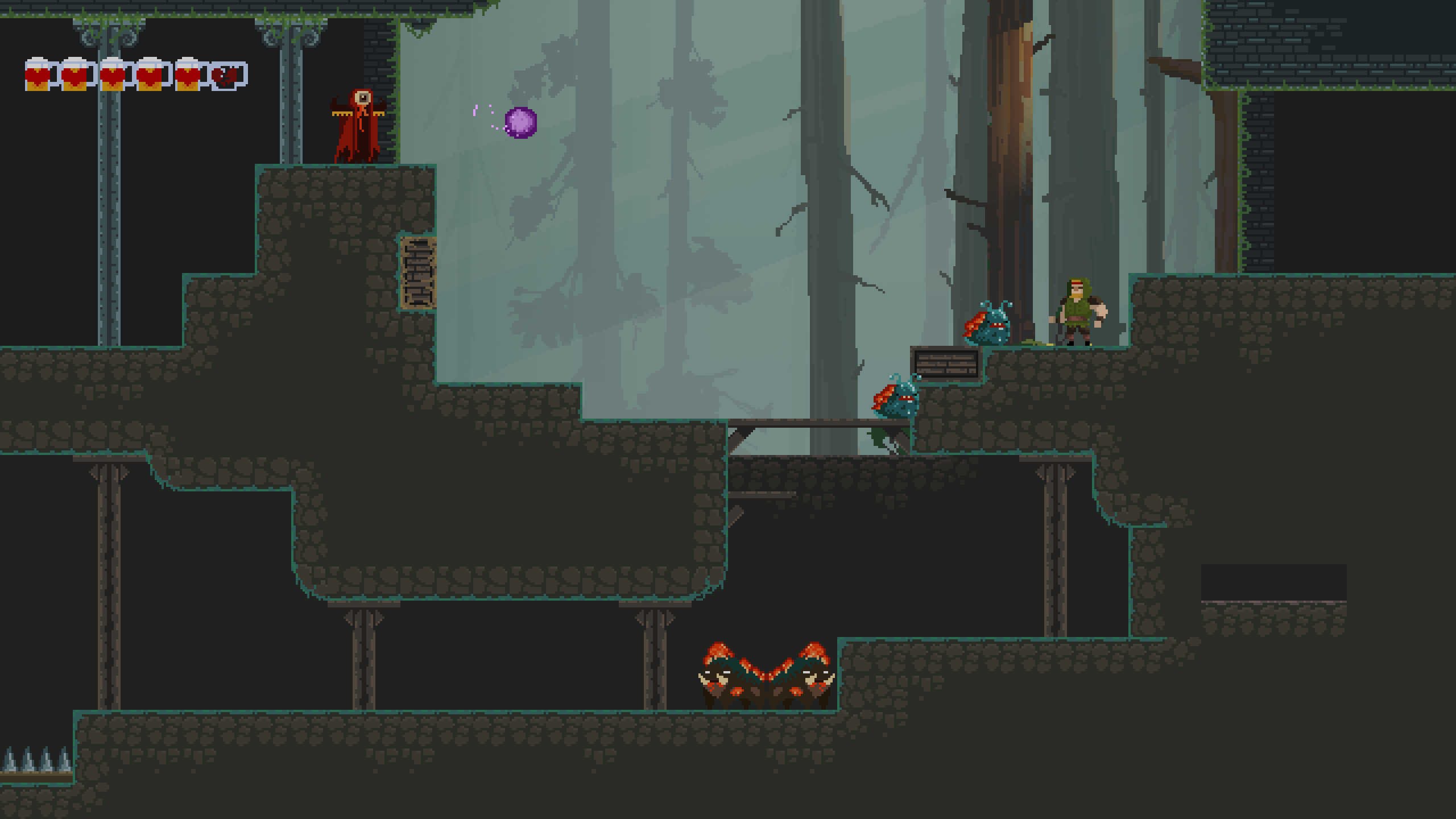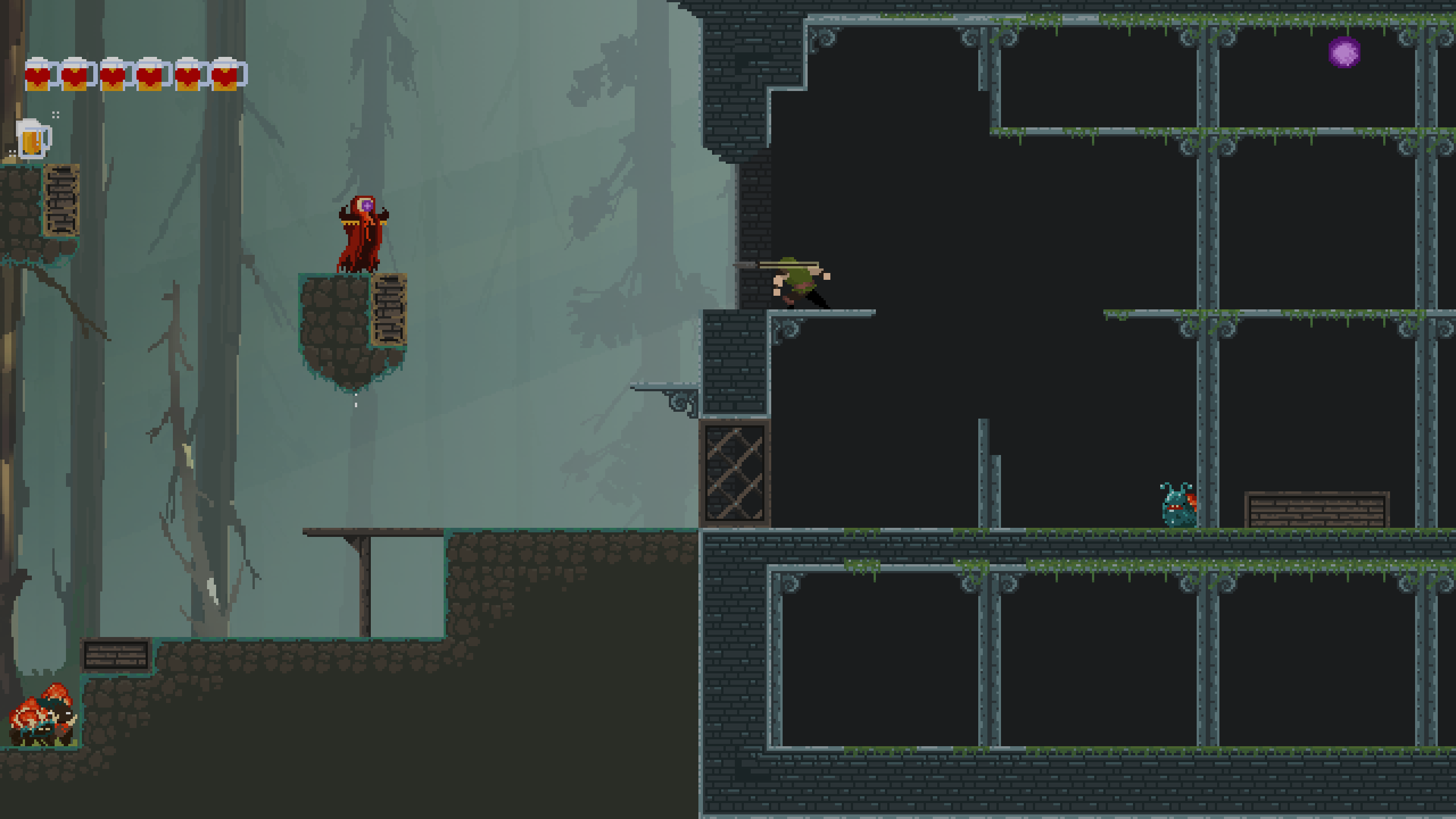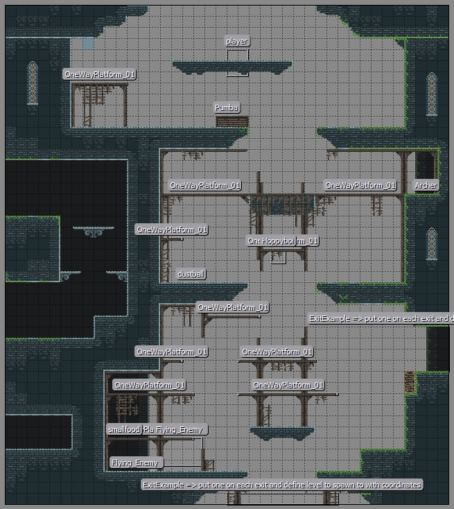
About
Brief: In 8 weeks, using a custom engine built by programming students, build a Metroidvania Platformer based on one specific reference game.
Release Date: June 14, 2019
Role: Level Designer
Engine: Coyote (Custom Engine)
Level Editor: Tiled
Platforms: Windows
Team Size: 18 Members
Duration: 8 Weeks
CHADDIUS MAXIMUS is a 2D Platformer Metroidvania where you take control of the big-muscled hero Chaddius, who must save his kingdom from a spreading corruption. With responsive movement and a throwable spear, players must traverse the ruins of the castle and fight the monsters that reside within.
Chaddius Maximus was created using the Coyote Engine, a custom made engine by a team of programmers in 16 weeks. After the first 8 weeks, the team was reformed, during which I joined project, the original concept was scrapped, and development for Chaddius Maximus started.
During the first 8 weeks of engine development, I was working on the Skaturion project.
Gameplay Video
The video below features all the levels I have made. It consists of the first scene, where Chaddius approaches the castle and the player is onboarded to the mechanics and enemy types, and the third scene, in which Chaddius descends to the castle’s ruined lower levels where the player acquires the Spear Throw ability.
My Contributions
All levels in Scene 1.
The first 5 levels are meant for onboarding, including simple platforming segments and introducing the enemy types and their behavior.
The difficulty slowly increases, from forgiving jumps to gaps with lava/longer drops, and from individual enemy introductions to challenging combined encounters.
All levels in Scene 3.
In these 3 levels, Chaddius descends to the lower parts of the castle, and the player acquires the Spear Throw ability.
Though the scene has only three levels, they feature the first true Metroidvania backtracking; the new ability allows the player to throw their spear into a wall, use it as a platform, and access new places in the levels they visited before.
Building and art-passing the levels in Tiled.
The custom-built Coyote engine worked with the free third-party Tiled Map Editor. Using the varied tileset made by our environment artists, level designers were able to efficiently build and iterate on our levels.
Because of the lack of manpower in our relatively small team, level designers had to do the art-passing instead of environment artists. Read more on our pipeline below.
Playtesting and iterating.
All levels have gone through multiple iterations based on user feedback gathered through playtesting.
By following this process, we made levels that are user-centric, prioritizing the player experience above all else.

Establishing the level design pipeline.
Having 8 weeks to build a game from scratch on a custom engine and being short on manpower in design and visual art, our processes were quite different than on other projects.
Being the only full-time level designer on the team, I established a pipeline that ensured level design and environment art worked as efficiently as possible, and to deliver the highest possible quality without cutting corners.
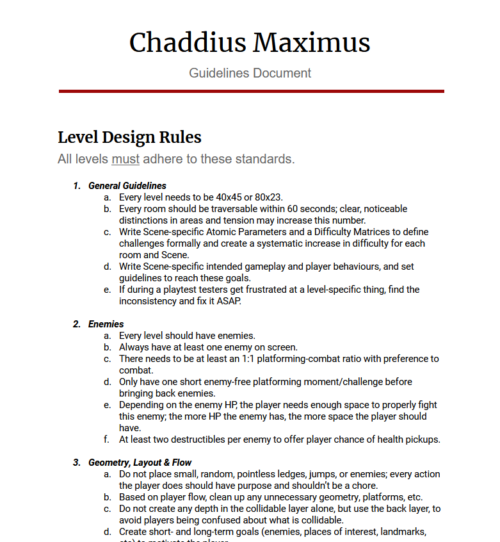
Writing the level design guidelines.
To ensure consistency among levels in difficulty, asset usage, tech, etc., I wrote a one-page guidelines document to be used by level designers.
The document was formatted as a one-page document that was clear and concise, so we could print it out and always have it on our desk next to us while working.

